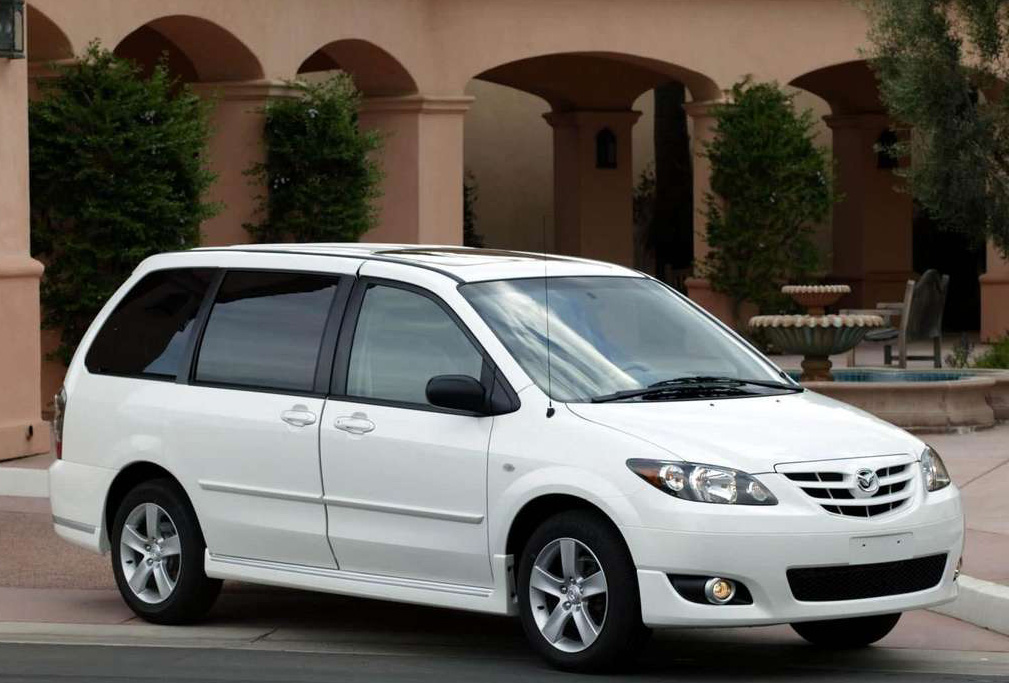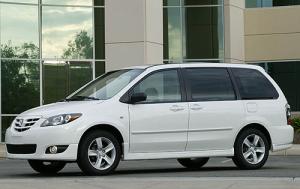The minivan boom of the 1980s caught the Japanese car makers by surprise. Each maker had its own response: Toyota was first with an adaptation of their mid-engined Van, based on the Japanese TownAce in 1984. Nissan and Mitsubishi quickly followed suit with conversions of cargo vans in 1987, but all of them were small and only offered four-cylinder engines which limited their popularity in North America.
.jpg)
mazda mpv
The 1989 MPV was designed from the ground-up as a minivan specifically for the American market. It was based on the large rear wheel drive 929's HC. It would be called the LV platform, and equipped the MPV with a V6 engine and optional four-wheel drive. Its selectable 4WD system is not to be confused with permanent "all wheel drive" systems; the MPV can be switched into 4WD with a switch mounted on the column gear selector. A dash mounted switch also allowed the driver to lock the center differential, splitting power equally between the front and rear axles. The 4WD can be engaged and disengaged while moving.

Mazda MPV
Unlike other minivans, the MPV's parking brake was directly on the floor beside the driver's seat and operated by the hand, when most other minivans had the parking brake in the driver footwell area and operated by the left foot. Like the later Honda Odyssey introduced in North America starting in 1995, it featured traditional hinged doors instead of sliding rear doors, though the original MPV only had a single rear door. This was also the only Mazda MPV generation with a manual transmission. The middle row was available as a bench, allowing seating for eight when most minivans only seated seven. Because of the MPV's optional 4WD, the Mazda Navajo version of the Ford Explorer (sold from 1991 to 1994) was only offered as a two-door, so as to minimize internal competition.

Mazda MPV 150

2006 Mazda MPV LX 4dr Minivan

Mazda MPV 1996 Service Manual

mazda mpv
.jpg)
mazda mpv
The 1989 MPV was designed from the ground-up as a minivan specifically for the American market. It was based on the large rear wheel drive 929's HC. It would be called the LV platform, and equipped the MPV with a V6 engine and optional four-wheel drive. Its selectable 4WD system is not to be confused with permanent "all wheel drive" systems; the MPV can be switched into 4WD with a switch mounted on the column gear selector. A dash mounted switch also allowed the driver to lock the center differential, splitting power equally between the front and rear axles. The 4WD can be engaged and disengaged while moving.

Mazda MPV
Unlike other minivans, the MPV's parking brake was directly on the floor beside the driver's seat and operated by the hand, when most other minivans had the parking brake in the driver footwell area and operated by the left foot. Like the later Honda Odyssey introduced in North America starting in 1995, it featured traditional hinged doors instead of sliding rear doors, though the original MPV only had a single rear door. This was also the only Mazda MPV generation with a manual transmission. The middle row was available as a bench, allowing seating for eight when most minivans only seated seven. Because of the MPV's optional 4WD, the Mazda Navajo version of the Ford Explorer (sold from 1991 to 1994) was only offered as a two-door, so as to minimize internal competition.

Mazda MPV 150

2006 Mazda MPV LX 4dr Minivan

Mazda MPV 1996 Service Manual

mazda mpv
No comments:
Post a Comment